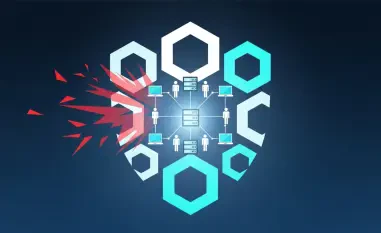What happens when the digital backbone of society becomes a battleground for ideological warfare, leaving public sector systems reeling under an unprecedented wave of cyberattacks in 2025? From municipal websites to critical government services, these systems are facing disruptions that shake public trust and expose vulnerabilities. Distributed Denial of Service (DDoS) attacks, largely orchestrated by hacktivist groups, have surged to the forefront, disrupting essential operations. This isn’t just a technical nuisance; it’s a stark reminder of how vulnerable the guardians of citizen welfare have become in the face of relentless digital adversaries.
The significance of this crisis cannot be overstated. Public administrations are not merely organizations; they are the bedrock of national stability, managing everything from law enforcement data to employment services. Yet, their role as stewards of sensitive information makes them prime targets for a spectrum of threat actors, including hacktivists, cybercriminals, and state-sponsored entities. With hundreds of incidents reported annually, the urgency to address this escalating threat landscape has never been clearer, as the consequences ripple through communities and governance structures alike.
Why Public Sector Systems Face Relentless Attacks
The public sector stands as a symbol of authority and service, but this very prominence paints a target on its back. Hacktivists, driven by ideological motives, often see government portals and municipal websites as platforms to broadcast dissent, using DDoS attacks to overwhelm systems and halt operations. These disruptions aren’t random; they are calculated strikes aimed at exposing perceived injustices or simply creating chaos to undermine public confidence.
Beyond ideology, the sector’s treasure trove of sensitive data attracts a different breed of attacker. Cybercriminals and state actors exploit weaknesses to harvest personal information or destabilize critical infrastructure, knowing that a breach in law enforcement or welfare systems can yield significant leverage. The stakes are high—when a government portal goes down, it’s not just an inconvenience; it’s a direct hit to societal functions that millions rely on daily.
This convergence of motives—ideological, financial, and geopolitical—creates a perfect storm. Public sector entities, often constrained by budget limitations and bureaucratic inertia, struggle to keep pace with the sophisticated tactics of their adversaries. As attacks mount, the question looms: how can these vital institutions shield themselves from a threat that evolves faster than their defenses?
Unique Risks in the Public Sector’s Cyber Arena
Unlike private industries, the public sector carries the weight of citizen trust and national security on its shoulders. Managing vast amounts of sensitive data—from personal records to critical infrastructure details—positions it as a high-value target. A recent analysis by cybersecurity experts revealed that central government entities bear the brunt of attacks, accounting for 69% of documented incidents, largely due to their visibility and symbolic importance.
Compounding this exposure is a systemic lag in cybersecurity readiness. Many public administrations operate on outdated systems, lacking the robust defenses seen in more agile sectors. Reports indicate that 586 incidents struck the sector in a single year, with a majority tied to insufficient safeguards—a vulnerability that attackers exploit with alarming ease. This gap isn’t just technical; it’s a structural challenge that demands urgent overhaul.
Regulatory pressures add another layer of complexity. With stricter mandates now in place, such as enhanced cybersecurity directives across Europe, public entities face the dual burden of compliance and protection. Failure to adapt risks not only penalties but also deeper breaches of public trust, as citizens question why their data remains so exposed in an era of digital sophistication.
Dissecting the Threat Landscape: DDoS and Beyond
The cyber threats facing the public sector are as varied as they are dangerous, but one reigns supreme: DDoS attacks. Comprising 60% of all incidents, these attacks—63% of which are driven by hacktivist groups—target municipal and government portals with overwhelming traffic to render them inaccessible. The sheer volume of these disruptions often overshadows other threats, yet their impact is frequently more symbolic than destructive.
In contrast, data breaches, though less frequent at 17% of incidents, strike at the heart of public welfare. Often orchestrated by cybercriminals or state actors, these breaches compromise sensitive platforms like employment services, exposing personal information with far-reaching consequences. The violation of trust and potential for identity theft make these incidents particularly devastating, even if they don’t garner the same headlines as a website outage.
Ransomware, accounting for 10% of attacks, delivers another crippling blow. Variants like RansomHub and LockBit 3.0 have targeted law enforcement portals and other critical systems, locking out administrators and demanding payment for access. The disruption to service continuity, paired with the financial and reputational toll, underscores a harsh reality: while DDoS attacks dominate in number, the deeper damage often comes from these less frequent but more insidious threats.
Ground-Level Perspectives on Cyber Vulnerabilities
Behind the stark statistics lies a grimmer reality for those tasked with defending public systems. Cybersecurity experts have sounded the alarm, noting that the sector’s maturity in handling digital threats remains alarmingly low. One assessment placed public administrations in a “risk zone” for meeting new regulatory standards, citing a lack of resources and expertise compared to other industries—a gap that leaves them perpetually playing catch-up.
Voices from within the sector echo this concern. IT managers in government agencies describe a constant battle against evolving attack methods, often with limited budgets and outdated tools. “It’s not just about stopping an attack; it’s about predicting the next one,” noted a senior official during a recent cybersecurity forum, highlighting the proactive mindset that remains elusive for many understaffed teams.
The public’s perspective adds another dimension. When a municipal website crashes or personal data leaks, the erosion of trust is palpable. Citizens expect seamless services and ironclad security, yet repeated incidents fuel frustration and skepticism. These ground-level insights reveal a shared truth: the public sector’s cyber struggles are not just technical—they are deeply human, affecting confidence in governance itself.
Fortifying Defenses: Strategies for a Resilient Future
Amid the barrage of cyber threats, surrender is not an option for public sector entities. Practical solutions exist to bolster resilience, starting with countermeasures for the dominant DDoS attacks. Deploying content delivery networks (CDNs) and web application firewalls (WAFs) can absorb and deflect malicious traffic, ensuring that websites remain operational even under heavy assault. These architectural enhancements are a critical first line of defense.
To combat data breaches, a layered approach proves essential. Implementing multi-factor authentication (MFA) and privileged access management (PAM) restricts unauthorized access, while data loss prevention (DLP) tools monitor and protect sensitive information. These measures, though resource-intensive, are non-negotiable for safeguarding citizen data against increasingly sophisticated cybercriminals.
Ransomware demands its own arsenal of defenses. Endpoint detection and response (EDR) systems can identify threats early, while network segmentation limits the spread of an attack. Regular backups, stored securely, ensure that systems can be restored without capitulating to ransom demands. By adopting these tailored strategies, public administrations can shift from reactive firefighting to proactive protection, rebuilding trust and securing their vital role in society.
Reflecting on a Battle Fought and Lessons Learned
Looking back, the public sector stood at a crossroads in 2025, grappling with an unrelenting wave of cyberattacks that tested its resolve. Hacktivist-driven DDoS assaults dominated the landscape, while data breaches and ransomware carved deeper wounds into the fabric of public trust. Each incident served as a harsh reminder of the stakes involved when the digital defenses of society’s guardians faltered.
Yet, from those challenges emerged a clearer path forward. Strengthening cybersecurity became not just a technical mandate but a societal imperative, with actionable steps like enhanced architectures and robust data protections offering hope. Public administrations began to recognize that resilience required investment—both in technology and in training the people behind the screens.
Moving ahead, the focus shifted toward sustained collaboration between governments, cybersecurity experts, and citizens to anticipate threats before they struck. Building a culture of vigilance and prioritizing rapid response mechanisms promised to turn vulnerabilities into strengths. The journey ahead demanded unwavering commitment, but it held the potential to transform the public sector into a fortress against digital adversaries, ensuring that essential services endured no matter the odds.













